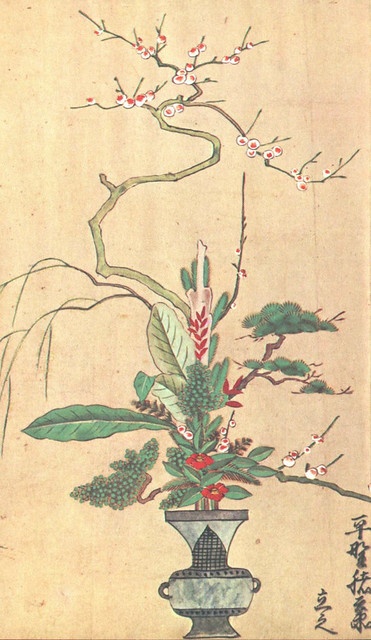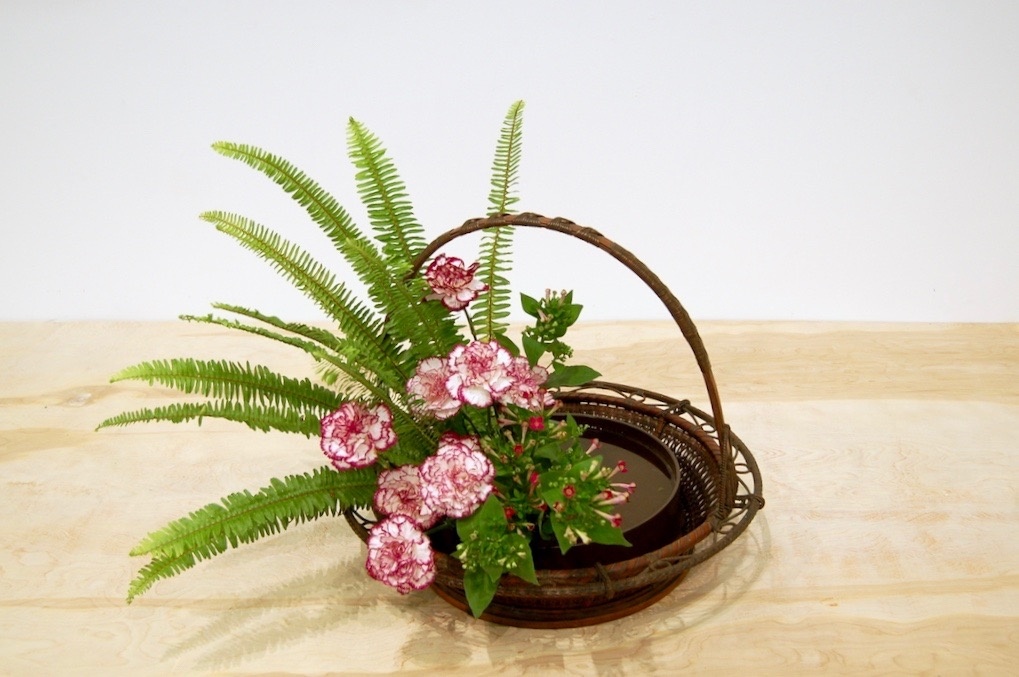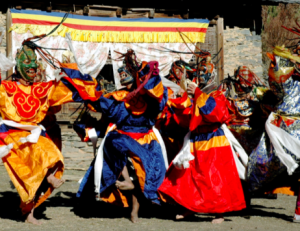
One of the most widely practiced of all Japanese art forms is ikebana, or flower arrangement. The word “ikebana” literally means “living flowers,” suggesting that while the flowers have been cut and are no longer growing, they are being given new life in these arrangements. In ikebana, practitioners place flowers and leaves artfully in a vase, bowl, basket, or basin, taking care to emphasize not only the bloom of each flower, but also the line and form of stems, leaves, and buds.
Arrangements are typically created in accordance with the season, occasion, or mood desired for a particular event, and although the practitioners of certain schools often use contemporary materials and styles, most arrangements adhere to aesthetic and spiritual principles that have evolved over several centuries. In fact, the tradition has very ancient roots dating to around the 6th century, when Buddhism was first introduced to Japan from China via Korea. With this new religion, temples were built to house sculptures and paintings of the Buddha and other deities, and offerings of flowers, incense, and food were made to these deities at temple altars.

author
The custom of offering flowers to Buddhist deities was soon combined with Japan’s native Shinto animistic tradition of using cuttings from evergreen plants to attract kami, or higher beings, to sacred sites. Soon a native Japanese style of flower arrangement known as tatebana, or “standing flowers,” was born. In some of the earliest Japanese floral offerings, Buddhist priests gathered three main stems of different lengths together to represent harmony between heaven, humans, and earth, a powerful spiritual concept that has remained at the heart of ikebana until today. Around the 10th century, Japanese Buddhist priests began arranging these flowers in containers and placing them on the altar along with incense burners and candleholders, in a set of three ceremonial objects known as mitsugusoku.
For the next 300 years or so, such flower arrangements were confined to Buddhist temples, but in the Muromachi period (c.1333–1573), with the introduction of the tokonoma alcove and chigaidana staggered shelves in the residences of the warrior elite in Kyoto, these ceremonial objects were arranged in the alcove and on the shelves as decorative elements. Paralleling the secularization and evolution of tea drinking in these warrior residences, flower arrangements became a part of elite warrior culture, which was in turn heavily influenced by Chinese culture. Flower vases were typically imported Chinese bronzes, lacquer wares, and celadon vessels, often paired with Chinese paintings and calligraphy, often featuring Buddhist themes. Even though the setting of the floral arrangements was secular, it was quite common to pair the arrangements in the alcove with monochromatic Zen ink paintings and calligraphic inscriptions by Chinese and then later Japanese Zen artists.

c.1700 by Hirozumi Sumiyoshi. From wikipedia.org
Ikebana is believed to have undergone a major transformation in the 15th century under Senkei Ikenobo, a priest at the Rokkakudo temple in Kyoto. Known for his fine arrangements, the Buddhist priest was invited by a warrior to arrange flowers in his residence. The popularity of his arrangements is said to have inspired secular flower arrangement and launched the first school of ikebana, Ikenobo. One of the most important styles of ikebana that is believed to have evolved under Senkei was rikka, which also means “standing flowers.” A formal style of floral arrangement that became favored in the reception rooms of warrior residences, temples, and the imperial palace, rikka arrangements originally symbolized the mythical Mt. Meru of Buddhist cosmology, with elements also drawn from Daoism. Formal rikka is arranged out of nine main branches and some secondary branches. The number nine represents yin (Japanese: in) and yang (Japanese: yō), and seven natural elements: peak, waterfall, hill, foot of the mountain, and the town. Today, rikka is still a favored style of the Ikenobo school for arranging flowers for formal occasions and before an image of the Buddha.

From rikka, all later styles of Japanese floral art eventually developed, from the shoka (“living flowers”) style, a simplification of rikka that gained increasing popularity among the townspeople of the Edo period, to the informal nage-ire (“thrown-in”) style used in tearooms. Even in a secular context, the more formal arrangements exuded the elegant yet somewhat stiff ceremonial aura of floral offerings to Buddhist deities, while the more casual styles echoed the Zen aesthetic of simplicity and austerity that inspired the world of the tea ceremony from the 15th century onwards.
With the emergence of many new schools of ikebana over the last few centuries, the styles of ikebana flower arrangements diversified so much that today there seems little in common between a traditional Ikenobo-school rikka arrangement of plum, bamboo, and pine in a tall stoneware vase and a Sogetsu-school arrangement of bird-of-paradise flowers in a plastic container. However, one element that unites the 3,000 or so schools that currently practice and teach this traditional Japanese art form is the spiritual depth the practice requires.

According to Sofu Teshigahara, founder of the Sogetsu school, “Ikebana is not just about sticking a flower into a vase. It is about the love and the need of the artist to create beautiful forms. Ikebana is not just about the flowers. It is about the person who arranges them.”* Arranging flowers is a highly meditative act, typically performed in silence to allow the practitioner to observe and meditate on the beauty of nature. Ikebana is not simply decorative; it is a spiritual process that helps practitioners develop a closeness with nature and bring together the interior and exterior worlds.













